Matteo Gatti
Creating a Segmented Pointcloud of Grapevines by Combining Multiple Viewpoints Through Visual Odometry
Aug 29, 2024


Abstract:Grapevine winter pruning is a labor-intensive and repetitive process that significantly influences the quality and quantity of the grape harvest and produced wine of the following season. It requires a careful and expert detection of the point to be cut. Because of its complexity, repetitive nature and time constraint, the task requires skilled labor that needs to be trained. This extended abstract presents the computer vision pipeline employed in project Vinum, using detectron2 as a segmentation network and keypoint visual odometry to merge different observation into a single pointcloud used to make informed pruning decisions.
Surgical fine-tuning for Grape Bunch Segmentation under Visual Domain Shifts
Jul 03, 2023Abstract:Mobile robots will play a crucial role in the transition towards sustainable agriculture. To autonomously and effectively monitor the state of plants, robots ought to be equipped with visual perception capabilities that are robust to the rapid changes that characterise agricultural settings. In this paper, we focus on the challenging task of segmenting grape bunches from images collected by mobile robots in vineyards. In this context, we present the first study that applies surgical fine-tuning to instance segmentation tasks. We show how selectively tuning only specific model layers can support the adaptation of pre-trained Deep Learning models to newly-collected grape images that introduce visual domain shifts, while also substantially reducing the number of tuned parameters.
Towards Precise Pruning Points Detection using Semantic-Instance-Aware Plant Models for Grapevine Winter Pruning Automation
Sep 15, 2021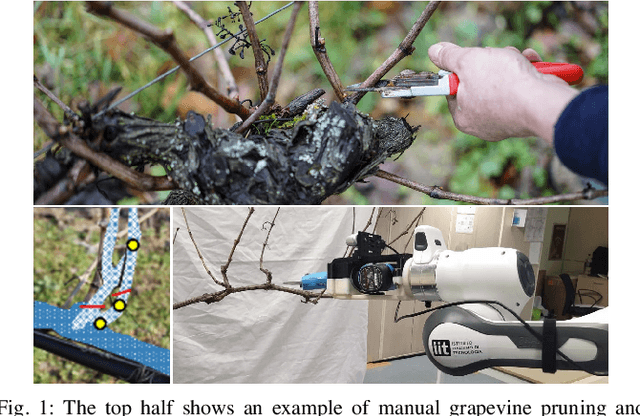
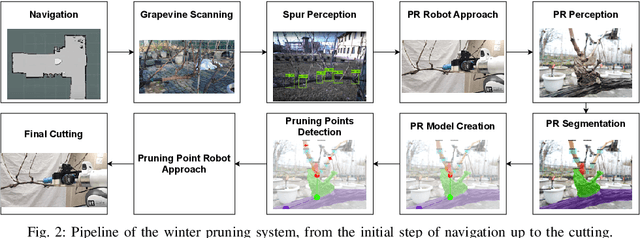
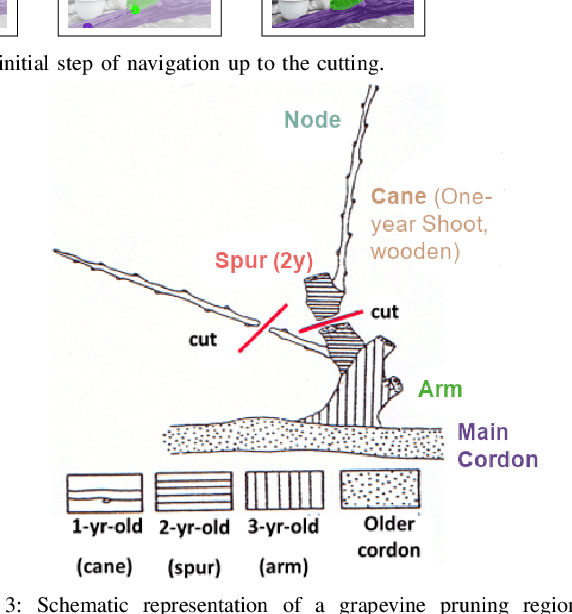
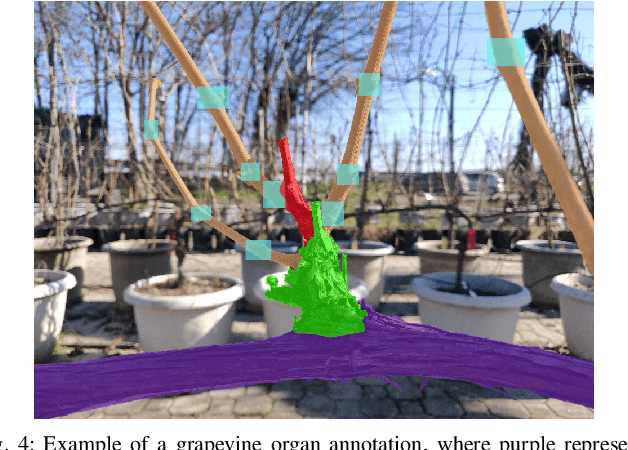
Abstract:Grapevine winter pruning is a complex task, that requires skilled workers to execute it correctly. The complexity makes it time consuming. It is an operation that requires about 80-120 hours per hectare annually, making an automated robotic system that helps in speeding up the process a crucial tool in large-size vineyards. We will describe (a) a novel expert annotated dataset for grapevine segmentation, (b) a state of the art neural network implementation and (c) generation of pruning points following agronomic rules, leveraging the simplified structure of the plant. With this approach, we are able to generate a set of pruning points on the canes, paving the way towards a correct automation of grapevine winter pruning.
Grapevine Winter Pruning Automation: On Potential Pruning Points Detection through 2D Plant Modeling using Grapevine Segmentation
Jun 08, 2021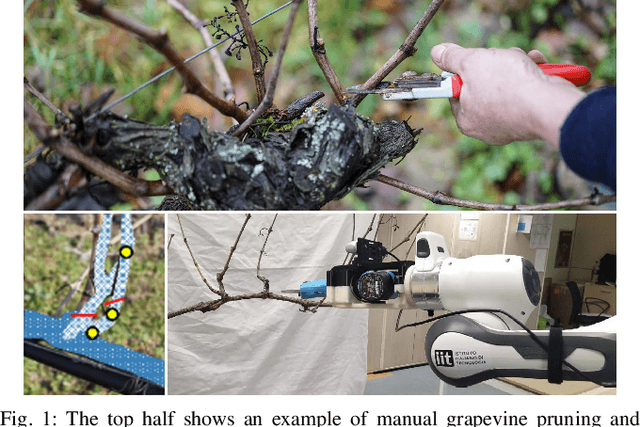

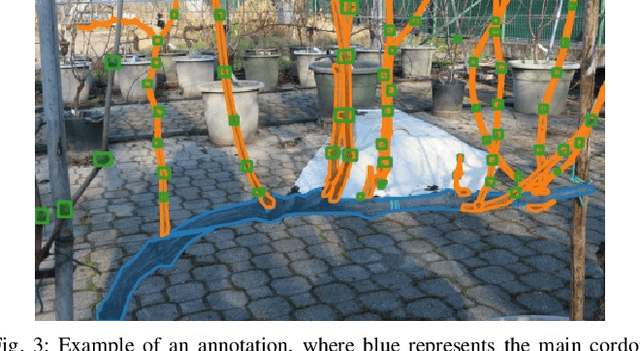
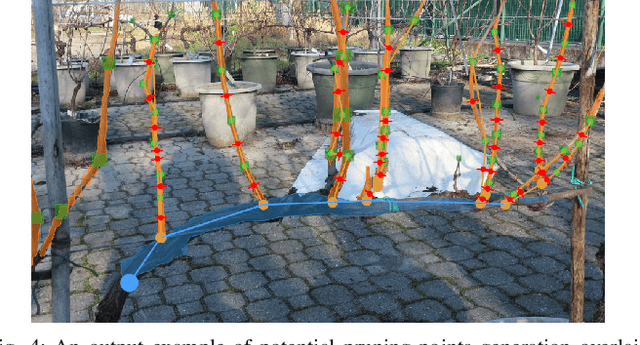
Abstract:Grapevine winter pruning is a complex task, that requires skilled workers to execute it correctly. The complexity of this task is also the reason why it is time consuming. Considering that this operation takes about 80-120 hours/ha to be completed, and therefore is even more crucial in large-size vineyards, an automated system can help to speed up the process. To this end, this paper presents a novel multidisciplinary approach that tackles this challenging task by performing object segmentation on grapevine images, used to create a representative model of the grapevine plants. Second, a set of potential pruning points is generated from this plant representation. We will describe (a) a methodology for data acquisition and annotation, (b) a neural network fine-tuning for grapevine segmentation, (c) an image processing based method for creating the representative model of grapevines, starting from the inferred segmentation and (d) potential pruning points detection and localization, based on the plant model which is a simplification of the grapevine structure. With this approach, we are able to identify a significant set of potential pruning points on the canes, that can be used, with further selection, to derive the final set of the real pruning points.
Whole-Body Control on Non-holonomic Mobile Manipulation for Grapevine Winter Pruning Automation
May 22, 2021
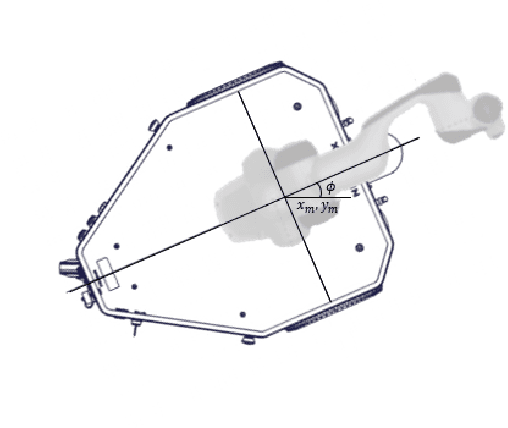
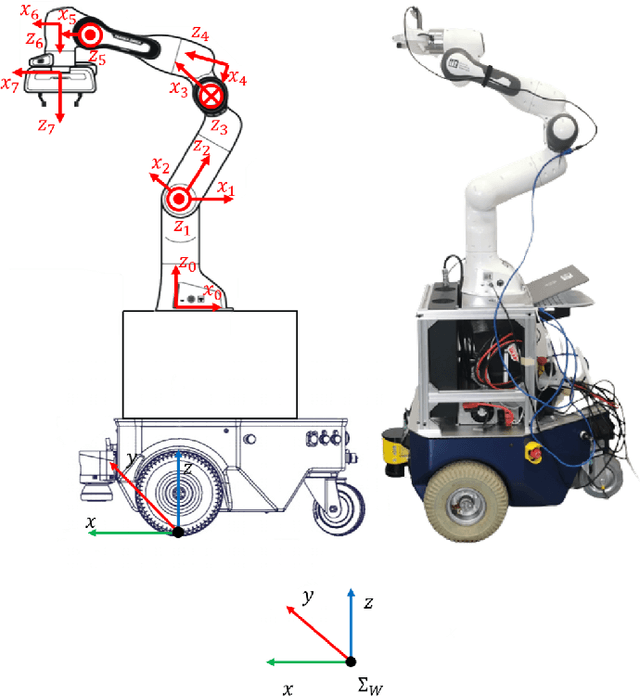

Abstract:Mobile manipulators that combine mobility and manipulability, are increasingly being used for various unstructured application scenarios in the field, e.g. vineyards. Therefore, the coordinated motion of the mobile base and manipulator is an essential feature of the overall performance. In this paper, we explore a whole-body motion controller of a robot which is composed of a 2-DoFs non-holonomic wheeled mobile base with a 7-DoFs manipulator (non-holonomic wheeled mobile manipulator, NWMM) This robotic platform is designed to efficiently undertake complex grapevine pruning tasks. In the control framework, a task priority coordinated motion of the NWMM is guaranteed. Lower-priority tasks are projected into the null space of the top-priority tasks so that higher-priority tasks are completed without interruption from lower-priority tasks. The proposed controller was evaluated in a grapevine spur pruning experiment scenario.
 Add to Chrome
Add to Chrome Add to Firefox
Add to Firefox Add to Edge
Add to Edge